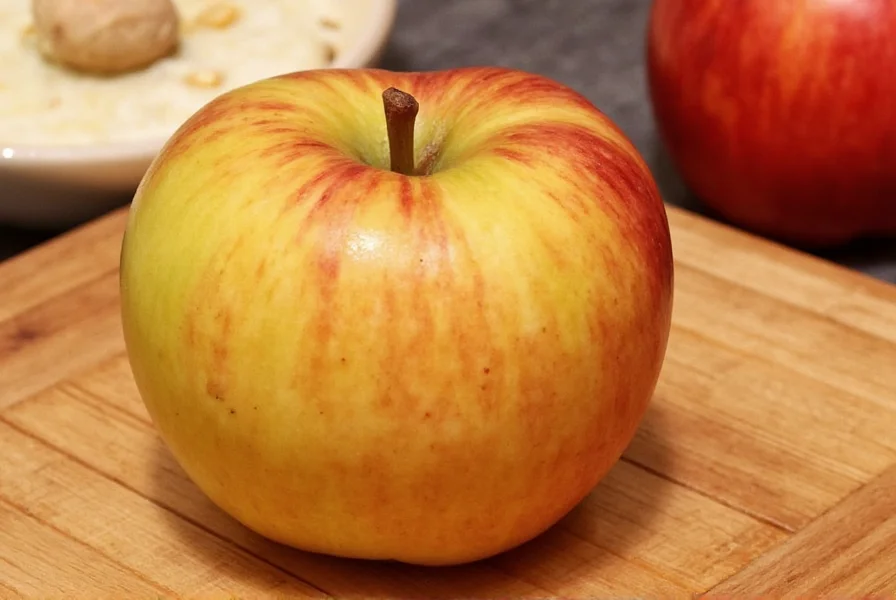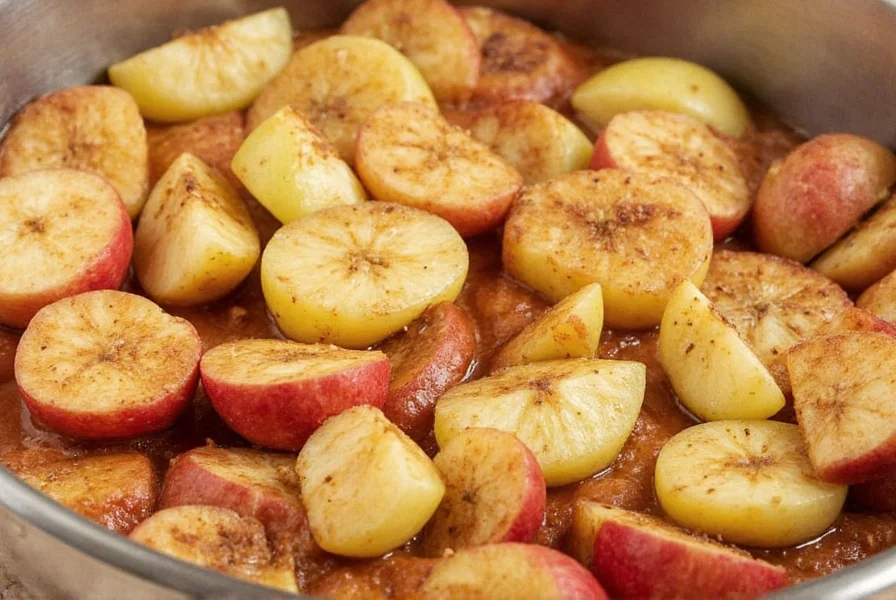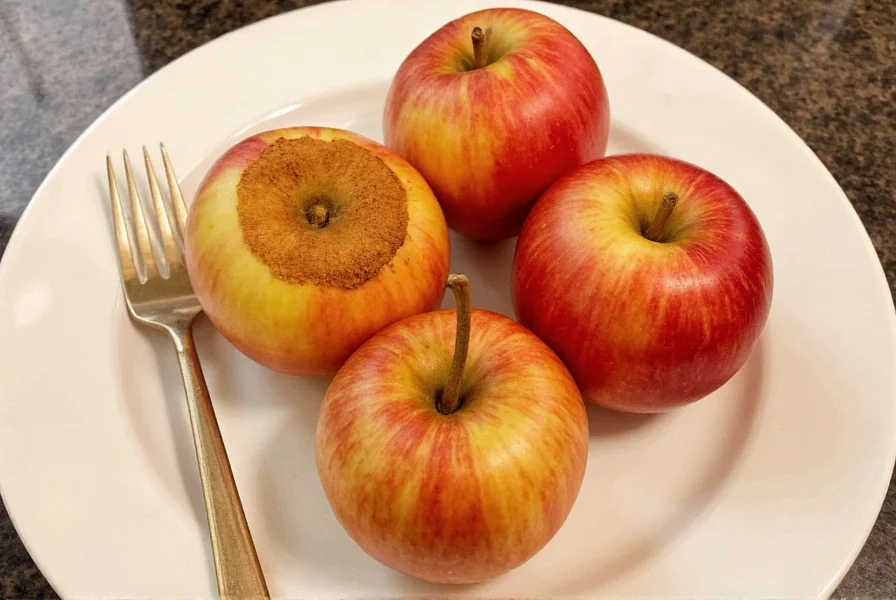There's a reason cinnamon apples have remained a beloved preparation for centuries—they transform humble fruit into something extraordinary with minimal effort. This versatile dish works equally well as a breakfast side, dessert topping, or healthy snack. Understanding the science behind this classic combination helps you achieve perfect results every time.
The Perfect Harmony of Cinnamon and Apples
Cinnamon and apples form one of culinary history's most successful partnerships. The warm, sweet-spicy notes of cinnamon complement the natural tartness of apples through a fascinating chemical interaction. Cinnamaldehyde, cinnamon's primary compound, enhances our perception of sweetness while reducing perceived acidity—making even tart apple varieties taste perfectly balanced.
Food scientists have discovered that heating these ingredients together creates new flavor compounds through the Maillard reaction, producing complex caramel notes that neither ingredient has on its own. This transformation explains why raw cinnamon-apple combinations never match the depth of flavor achieved through proper cooking.
Selecting Apples for Cinnamon Preparation
Not all apples perform equally in cinnamon preparations. The ideal varieties maintain structure while developing complex flavor when cooked:
| Apple Variety | Cooking Performance | Best For |
|---|---|---|
| Honeycrisp | Holds shape well, balanced sweet-tart | Stovetop preparations, salads |
| Braeburn | Firms up when cooked, complex flavor | Baking, slow cooker recipes |
| Granny Smith | Maintains tartness, holds shape | Desserts needing bright flavor |
| Fuji | Becomes very tender, extra sweet | Applesauce, baby food |
For most cinnamon apple recipes, a blend of two varieties delivers optimal results—combine a tart apple like Granny Smith with a sweeter variety such as Honeycrisp to create layered flavor complexity.
Mastering the Basic Stovetop Method
This foolproof technique produces restaurant-quality cinnamon apples in minutes with basic kitchen equipment:
- Peel and slice 3 medium apples into 1/4-inch thick wedges
- Melt 1 tablespoon butter in a skillet over medium heat
- Add apples in single layer, sprinkle with 1 teaspoon cinnamon and 1 tablespoon sweetener
- Cook undisturbed for 3 minutes until bottom layer begins caramelizing
- Flip apples, add 1 tablespoon lemon juice and 2 tablespoons water
- Cover and cook 8-10 minutes until tender but not mushy
- Uncover and cook 2 more minutes to thicken liquid

Three Distinct Preparation Methods
Different cooking techniques yield unique textures and flavor profiles:
Stovetop Sauté (15 minutes)
Ideal for quick breakfast accompaniments or pancake toppings. The direct heat creates beautiful caramelization while preserving distinct apple slices. Best with Honeycrisp or Braeburn varieties.
Oven-Baked (45 minutes)
Produces deeper flavor development through slow caramelization. Toss apple slices with cinnamon mixture, spread on parchment-lined baking sheet, and bake at 375°F until tender. Excellent for meal prep as flavors continue developing upon standing.
Slow Cooker (3 hours)
Creates exceptionally tender apples with concentrated flavor. Layer ingredients in slow cooker and cook on low. Perfect for holiday meals when oven space is limited. Add a splash of apple cider for extra depth.
Serving Suggestions Beyond the Basics
While delicious on their own, cinnamon apples shine when incorporated into creative dishes:
- Top Greek yogurt with warm cinnamon apples and chopped walnuts for a protein-rich breakfast
- Blend cooled cinnamon apples into smoothies for natural sweetness and fiber
- Use as filling for crepes or stuffed French toast on special occasions
- Mix with cooked steel-cut oats for elevated morning porridge
- Serve alongside pork chops for a classic sweet-savory pairing
Nutritional Benefits Worth Noting
This simple preparation preserves most of the apple's natural nutrition while adding beneficial compounds from cinnamon. One cup of homemade cinnamon apples provides:
- Approximately 95 calories (without added sweetener)
- 4 grams of dietary fiber (16% of daily value)
- Significant vitamin C and potassium
- Cinnamaldehyde, which may support healthy blood sugar levels
- Quercetin from apple skins, a powerful antioxidant
For maximum nutritional benefit, leave skins on your apples and use minimal added sweetener. The natural sugars in apples caramelize beautifully without extra sugar.
Troubleshooting Common Issues
Even simple recipes encounter challenges. Here's how to solve frequent cinnamon apple problems:
- Mushy apples: Overcooking or using inappropriate varieties. Choose firmer apples and reduce cooking time.
- Watery texture: Apples released too much liquid. Cook uncovered longer to evaporate excess moisture.
- Bland flavor: Cinnamon was stale or insufficient. Use fresh cinnamon and consider adding complementary spices like nutmeg.
- Burning: Heat too high or insufficient liquid. Maintain medium heat and add small amounts of water as needed.

Storage and Reheating Guidelines
Proper storage maintains quality for future enjoyment:
- Refrigerate in airtight container for up to 5 days
- Freeze in portion-sized containers for up to 3 months
- Reheat gently in microwave with teaspoon of water to prevent drying
- Stovetop reheating preserves texture better than microwave
Flavor actually improves after 24 hours as spices fully permeate the apples—making this an excellent make-ahead component for busy mornings.
Frequently Asked Questions
Can I make cinnamon apples without added sugar?
Yes, you can make delicious cinnamon apples without added sugar. Apples naturally contain fructose that caramelizes when cooked. For enhanced sweetness without added sugar, try mixing in a few pitted dates or a small amount of unsweetened apple juice. The natural sugars in these ingredients will caramelize during cooking, creating a sweet syrup without refined sugars.
What's the best cinnamon variety for cooking with apples?
Ceylon cinnamon (often called "true cinnamon") offers a more complex, delicate flavor that complements apples beautifully without overwhelming them. While more expensive than common Cassia cinnamon, its subtler profile works better in fruit preparations. If using Cassia cinnamon, reduce the amount by 25-30% to prevent bitterness. Always use freshly ground cinnamon for the most vibrant flavor in your easy cinnamon apples recipe stovetop preparation.
How do I prevent my cinnamon apples from turning mushy?
To maintain perfect texture in your cinnamon apples, select firm baking apples like Honeycrisp or Braeburn, slice them uniformly to 1/4-inch thickness, and avoid overcrowding the pan. Cook over medium heat rather than high, and limit stirring during the initial caramelization phase. For stovetop preparations, cover only during the tenderizing phase, then uncover to allow excess moisture to evaporate. Adding a teaspoon of lemon juice helps maintain apple structure during cooking.
Can I use cinnamon apples as a healthy dessert alternative?
Absolutely. Cinnamon apples make an excellent healthy dessert alternative when prepared with minimal added sweetener. For a satisfying dessert experience, serve warm cinnamon apples with a dollop of Greek yogurt instead of ice cream, or pair with a small portion of dark chocolate shavings. The natural sweetness and comforting spices provide dessert satisfaction with significantly less sugar and fat than traditional desserts, making this a smart choice for those seeking healthy cinnamon apple snack options.
What are the best ways to use leftover cinnamon apples?
Leftover cinnamon apples offer versatile culinary opportunities. Blend cooled leftovers into smoothies for natural sweetness, fold into pancake or waffle batter, mix with oatmeal, or use as filling for crepes. For savory applications, pair with roasted pork or chicken. You can also puree leftovers with a bit of liquid to create a sauce for ice cream or cheesecake. Properly stored in the refrigerator, they maintain quality for up to five days, making them ideal for meal prep.











 浙公网安备
33010002000092号
浙公网安备
33010002000092号 浙B2-20120091-4
浙B2-20120091-4